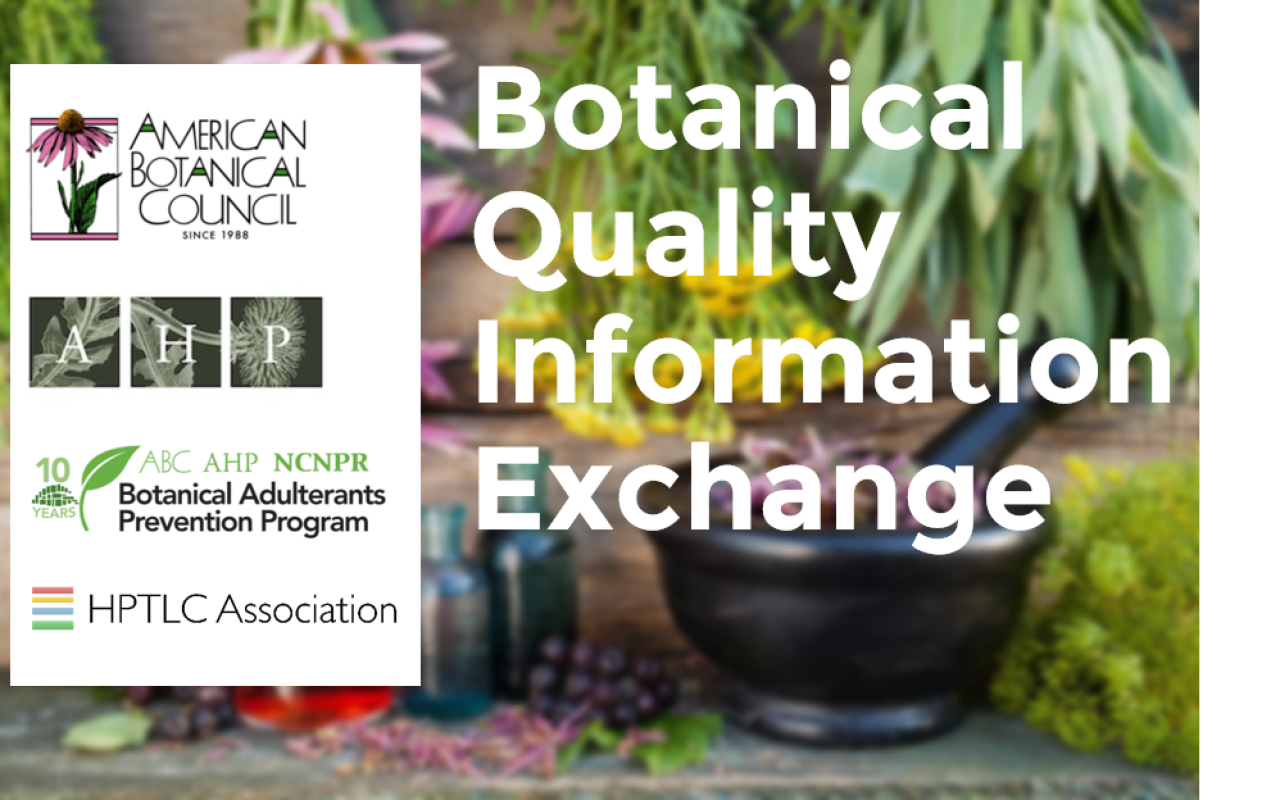
ABC, AHP, BAPP, and HPTLC Association Enter into Botanical Quality Information Exchange
By Mark Blumenthal (ABC, BAPP), Roy Upton (AHP), Stefan Gafner (ABC, BAPP), Maged Sharaf (HPTLC Association)
Analytical fingerprints of 285 herbs and botanical preparations in commerce from the HPTLC Association made freely available via ABC, AHP, and BAPP websites
PRESS RELEASE
AUSTIN, Texas (July 13, 2021) — The nonprofit American Botanical Council (ABC), the nonprofit American Herbal Pharmacopoeia (AHP), and the ABC-AHP-NCNPR Botanical Adulterants Prevention Program (BAPP) are pleased to announce the establishment of a partnership with the International Association for the Advancement of High Performance Thin Layer Chromatography (HPTLC Association) in Rheinfelden, Switzerland. ABC and AHP have signed memorandums of understanding (MOU) with the HPTLC Association. According to the MOUs, members of ABC and AHP, as well as registered users of the BAPP website, will gain free access to research, analytical, and educational electronic content owned by the HPTLC Association, including its high-performance thin-layer chromatography (HPTLC) analytical method collection, which currently contains 285 different entries for herbal ingredients. ABC, AHP, and BAPP will be listed as partners on the HPTLC Association website.
Founded in 2012, the HPTLC Association, an international, non-commercial, nonprofit association with more than 100 members from 18 countries, promotes the use of HPTLC in plant material analysis and other fields. The organization brings together researchers from academia, industry, research, regulatory, and standard-setting bodies, and contributes to the improvement of quality and quality control of traditional herbal medicines and herbal dietary (food) supplements. Goals of the association include the development and validation of analytical standards for plants and plant materials sold in commerce and their known adulterants, and to serve as the leading worldwide resource for scientifically sound information on HPTLC.
One of the highlights of the association’s work is the HPTLC Atlas (referred to as “The International Atlas for Identification of Herbal Drugs” on the HPTLC Association’s website), an online compendium with illustrated HPTLC fingerprints from the same plant species collected in many places around the world that are subject to different growing conditions. As such, this robust resource allows laboratory analysts to compare the chemical variability of plants from different geographical areas. The Atlas also provides chemical fingerprints from known confounding materials (sometimes used as adulterants) as a means to help quality control personnel in companies involved in the botanical supply chain and manufacture in the necessary quality control process of herbal ingredient authentication. In addition, Atlas entries contain HPTLC illustrations of botanically authenticated reference samples and specifications for each botanical item from numerous international pharmacopeias and reference publications. Further, the Atlas is a valuable analytical resource for laboratory analysts in academic research and government regulatory agencies.
“We are deeply grateful for this excellent collaboration with our friends at the HPTLC Association who have generously made their high-quality analytical resources available to botanical ingredient quality control personnel on an international basis,” said Mark Blumenthal, founder and executive director of ABC and director of BAPP. “The vast range of HPTLC fingerprints will no doubt assist botanical industry members on a global scale in ensuring that plant materials being proposed for use as ingredients for consumer botanical health products are authentic and free from non-disclosed adulterants that are sometimes added to botanical ingredients by unscrupulous producers and sellers of fraudulent materials.”
Roy Upton, AHP President, expressed his strong support for HPTLC as an important analytical method for botanical materials: “We are pleased to feature the contributions of the HPTLC Association intended to help AHP members in their herbal authentication work. AHP was a founding member of the HPTLC Association and has supported the development of numerous methods featured in the Association’s Method Collection. AHP believes that HPTLC is one of the most versatile and cost-effective techniques for chemical profiling and identification of plants that is of enormous value to industry and academics. AHP continues to work with the Association in developing new methods. A number of the Association methods were developed for AHP monographs.”
According to ABC Chief Science Officer and BAPP Technical Director Stefan Gafner, PhD: “Having a database, such as the HPTLC Atlas, with fingerprints of botanical ingredients grown in many areas around the globe is very useful, constructive, and compelling, as analysts and researchers will be able to see minor differences in an HPTLC trace depending on where the plant is grown. Making the Atlas’ information widely available will certainly be beneficial to industry-based ABC and AHP members, as well as the herbal industry and the botanical ingredient analysis community at large.”
Maged Sharaf, PhD, HPTLC Association board member and Chair of the Method Review Committee and the North American Chapter, added: “It gives the HPTLC Association's Board of Directors, and in particular those of us residing in North America, great pleasure to formalize our long collaboration and friendship with the American Botanical Council, the American Herbal Pharmacopoeia, and their partner at the University of Mississippi’s National Center for Natural Products Research. We are certain that this mutually beneficial partnership will further promote ABC’s vision of the public making ‘educated, responsible choices about herbal medicine as an accepted part of healthcare,’ which is analogous to one of the HPTLC Association’s missions.”
About the ABC-AHP-NCNPR Botanical Adulterants Prevention Program
Comments
Leave a comment